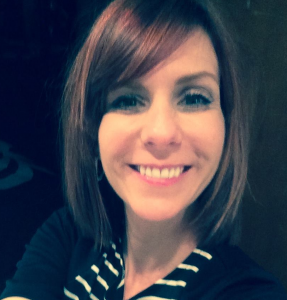By: Lindsay Smith, Melissa Young, and Rachel K. Deale, History PhD students, and Amy Chen, CLIR Postdoctoral Fellow
This post is the fourth in a five-part series titled “Curating the Confederacy: An Interview with the curators of Making Confederates and When this Cruel War is Over.” If you haven’t yet, please read the first, second, and third installments of this series.
The topic of these shows, Confederate imprints, was selected before you all joined the project as curators. If you had the opportunity to create another show with the holdings in the Division of Special Collections at the University of Alabama, what topic would you want to portray and why?
Rachel: Gordon Wood once said that there are two types of historians: hedgehogs and foxes. Hedgehogs focus on one big topic while foxes have diverse interests across multiple periods of history. I consider myself a hedgehog because I am most interested in the Civil War. Because Hoole has a large collection of Civil War sheet music published in the Confederacy, Border States, and North, I think I still would have focused my exhibit on music. But I definitely would have included music published in the Border States and the North.
Lindsay: I think it would be really fun to do a show on the University itself. It could use letters, photographs, old year books, and other material from the history of the University of Alabama to look at how student life has changed over the years. I really enjoy learning about the history of the places I know well. We are all acquainted with how campus looks now, but when you start thinking about the Gorgas house being the old cafeteria and the laundry facilities being located down at Mars Spring, it shifts your perspective of campus.
Melissa: I would absolutely love to do a show on some of the soldiers’ letters and manuscripts that are housed in the Williams Collection. I think they could be contextualized in particular contexts of the Civil War and be set apart by region and focus. I really enjoy examining the words of individual soldiers, and I feel the general public would be interested in the language the men used and what they discussed.
Another exciting exhibit would be one that featured the literature produced by various publishers, including S.H. Goetzel, a printer based in Mobile. This would allow us to focus upon both the literature and the publishing houses. We included several of Goetzel’s items in “Making Confederates,” which could be compared or contrasted with items printed by several other publishers across the South. We once spoke of creating a map featuring the locations of different southern printers, and I think that could be used as a main feature of such an exhibit. A similar thing could be done with Confederate authors. Both could demonstrate the widespread growth and influence of literature and publishing across the South.
What sort of collaborations would you like to imagine between the History department and the University Libraries in the future?
Rachel: I would like to see the History department and Library work more closely together. It is impossible for historians to do what we do without the help and expertise of librarians and archivists. I hope that more history graduate students will have the same opportunity that I did to gain hands on experience with curating. I would love to see history graduate students taking classes on document preservation and archives. But I would really like to see the History department and Library develop a program that would allow students to obtain both an MA in history and a MLIS degree at the same time. This would benefit both history and library students as many academic libraries require job candidates to have a second Master’s degree in addition to the MLIS degree.
Lindsay: I would love to see more projects like this. We have a wealth of graduate students with all sorts of interest who could contribute to exhibitions. However, I also think that undergrads, particularly history majors, would appreciate having a little more interaction with the archives. Really, it’s not until you start interacting with special collections and the archivists who keep them that you really figure out what this history thing is all about.
Melissa: I think public history projects that collaborate with the University Libraries are incredibly useful to graduate and undergraduate students who wish to gain curating experience or explore new topics. I feel this experience has made me realize how valuable it is to work with others to present information. Projects that focus upon teamwork and team building present “win-win” situations for both the student and the library. The library benefits from the knowledge and excitement the students bring to new projects, and the students gain valuable experience and research opportunities.
I would like to see a greater connection between the libraries and our department in the future. Projects that created billboards, banners, or exhibitions that were generated from items in the archives could really be appealing to those who wish to pursue alt-ac or public history careers. I am not sure students know about these types of opportunities, though I believe many would be interested in participating. Exploring the archives and working with the librarians has been wonderful for me. It not only allowed me to discover materials I didn’t know the university held, it introduced me to sources that I desire to explore in the future and introduced me to some really great people.


